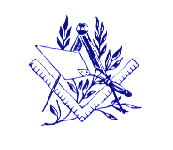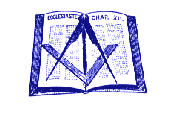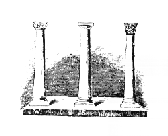
In your experience with the ritual you have learned that every detail in the ceremonies of initiation is full of meaning.
In the Third Degree are the deepest secrets and the most profound teachings of our Fraternity.
You passed through the degree in one night. To understand it will require many nights. In
the paragraphs that follow we can give you but a few hints, in the hope that they may
inspire you to study the Degree for yourself.
The symbolism of the First and Second degrees centers around the art of architecture. Its
purpose is to teach you, in the First, to be a builder of yourself; in the Second, a
builder of society. In the Third Degree, this symbolism takes another form.
Although its background continues to be architecture and its action takes place in and about the Temple, it is a spiritual symbolism of life and death.
Principally, it teaches Immortality.

If a man permits himself to be buried under the rubbish of sins and passions, it is possible, if he has learned the secret of the spiritual life and with the help of his God, to rise again into a new life.
This note is struck in the Scripture reading from the Book of Ecclesiastes, which pictures a man, once flushed with the health and strength, brought tottering by old age to the brink of the grave.
This, the Chapter tells us, will become a light burden to him who has learned to trust God.

The working tools of the degrees are all the implements of Masonry, but more especially the trowel by which we spread the cement of brotherly love.
But brotherly love itself has its source and seat in the soul.
To love a man above his sins, to cherish him in spite of his faults, to forgive him in all sincerity is possible only as we live in the spiritual life, our souls purged of selfishness.

The tragedy of Hiram Abif is the climax of the degree. It is indeed the climax of all the ceremonies of Freemasonry. Next in importance is the allegorical search for That Which was Lost.
This has an historical background. To the early Jewish people, the name of God was held in extreme reverence. This holy name was never pronounced above a whisper.
After a while, only the Priests were permitted to use it. Finally, only the High Priest and then only when alone in the Holy of Holies on the Day of Atonement.
During some national calamity, perhaps at the time of the Babylonian captivity, the High Priest perished before he had opportunity to pass it on to his successor.
In this way was the name lost. All this appears in our ritual in the form of an allegory. A word was possessed; the Word was lost.

Of the emblems of the Third Degree, one after another is set before us, apparently in no given order, and each with only a hint of what it signifies. Yet each stands for some great idea or ideal, necessary throughout our lives.
Each of them is a master of truth. In the Three Pillars we have the three great ideas of Wisdom, Strength, and Beauty.
The Three Steps remind us that youth, manhood, and age is each a unity in itself, each possessing its own duties and responsibilities with each calling for its own philosophy.

The Pot of Incense teaches that to be pure and blameless in our inner lives is more acceptable to God than anything else.
The Book of Constitutions is the emblem of law and reminds us that our moral and spiritual character is grounded in law and order as much as in government or nature. It teaches that no man can live a satisfactory life who lives lawlessly.
The Sword pointed to the naked heart discovers that one of the most rigorous of these laws is justice, and that if a man be unjust in his heart, the inevitable results of injustice will find him out.

The All-Seeing Eye shows that we live and move and have our being in God. That we are constantly in His Presence, wherever or whatever we are doing.
The Anchor and Ark stand for that sense of security and stability of life grounded in Truth and Faith.
The 47th Problem of Euclid is an emblem of the arts and sciences. By them we are reminded that next to sinfulness the most dangerous enemy of life is ignorance.
In the Hour Glass we have the emblem of the transitive nature of life; as no man lives forever in this world.
The Scythe reminds us that passing time will bring an end to our lives as well as our work and if we are to become what we ought to be, we must not delay.
